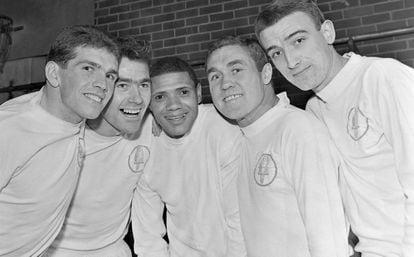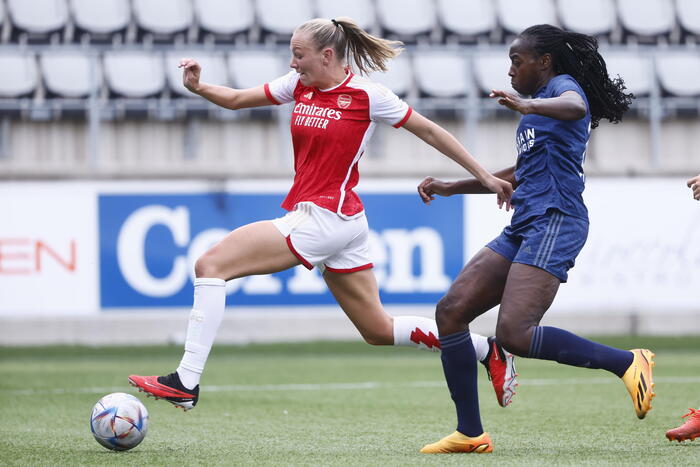The first FA Cup Liverpool won was in 1965, at the height of the Bill Shankly era.
He arrived at the club in 1959, he promoted it and had already won the League 63-64.
Now he was in the FA Cup final, in which he would face Leeds United, in turn the personal work of Don Revie, who also took the club in Second Division and promoted him.
Then, they had finished the League runner-up, but with the same points as Manchester United of Bobby Charlton, Dennis Law and George Best.
Shankly's Liverpool against Don Revie's Leeds.
A very appetizing ending.
But he would not go down in history for his game, but for the coincidence of two singular events of very opposite sign.
Leeds number 11 was black.
His name was Albert Louis Johanneson.
The other 21 finalists were from the British Isles.
At Liverpool, seven Englishmen and four Scotsmen;
at Leeds, four Englishmen, four Scotsmen, a Welshman, an Irishman and… Johanneson, a South African, signed in 1961 on the recommendation of a school teacher.
Very few of his race had reached the First Division by then, none had played in an FA Cup final, whose racial uniformity was being altered.
His presence provoked a barrage of guttural cries and monkey gestures, Zulu chants, throwing bananas at the band he was running with... Something pitifully common in those years, and remained so until very recently.
It would hardly subside when Viv Anderson, of Jamaican origin, became the first black player to debut for the English team in 1977, with the consequent dust.
Albert Louis Johanneson, the only black player in that final, poses with his Leeds United teammates.
Johanneson played poorly.
By now he could be used to it, but that environment got the best of him.
He did not feel defended by his own fans, many of whom did not accept that he wore the white Leeds shirt.
Liverpool left-back Gerry Byrne emerged as a hero from that final.
In the fifth minute he had a clash with the Scottish Bobby Collins, captain of Leeds, famous for his ferocity (Don Revie's entire team was, as those who have seen
Damned United
will know ), from which he came out with a bleeding leg.
He was cared for by Bob Paisley, who was acting as medical assistant as well as Shankly's second, whom he would succeed.
Byrne was worried about his leg, which was coming off an injury, but Paisley told him the problem wasn't there, it was with his broken collarbone.
"Don't tell Shankly," he pleaded, "he doesn't like injuries."
There were no substitutions.
Paisley did tell him and the answer was: “Don't bother!
It will be an exaggeration."
Byrne played the entire game and overtime, 115 minutes with his arm hanging and growing pain.
Even so, at the beginning of it he went on the attack and crossed the ball that Hunt would head for 1-0.
Bremmer would equalize for Leeds and finally Saint John would make it 2-1 that gave Liverpool their first FA Cup title. Waiting with everyone to go up for the Cup, Byrne was tortured by the idea of walking the steps exposed to the effusive spectators' slaps on the shoulder blade.
His brave attitude in that final marked the rest of his life.
The following year he was among 22 for England to win the World Cup at Wembley, albeit as a substitute.
Retired, he worked at the club, where he had arrived as a youth player.
In 2009 he received the gold medal as world champion after many years in which the Footballers' Association insisted that the 22 summoned, not just the 11 starters in the final, who received it at the time, were entitled to that medal.
He passed away at the age of 77, surrounded by general respect.
Another thing was the life of Johanneson.
Married in 1963 to a pharmacist from Jamaica, he had two children in happy beginnings, but the marriage lasted only 11 years.
Alcohol shortened her career and his life.
He passed away at 55. His body was found in his small apartment within a week of his passing.
But over time his memory grew as a pioneer in a difficult fight.
His figure was very prominent in an exhibition on South African football that I visited in Johannesburg on the occasion of the World Cup in South Africa.
In 2019 a plaque was placed in his honor in Leeds.
Wherever you are, you will have watched in awe at the multi-racial character of the final between Liverpool and Chelsea.
You can follow EL PAÍS Deportes on
and
, or sign up here to receive
our weekly newsletter
.
Exclusive content for subscribers
read without limits
subscribe
I'm already a subscriber









